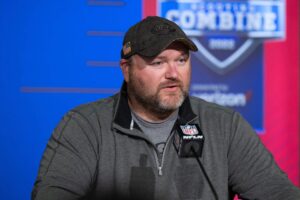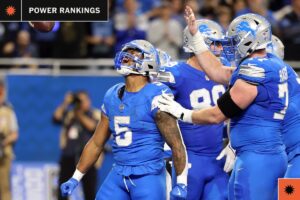Sienna* was “hyperactive from birth” – rolling, crawling, walking before her time.
But her active nature meant that it was increasingly difficult to manage her emotions as she grew up.
At the age of four, her mother Rachel* could no longer drive the car without Sienna throwing her shoes.
In preschool, Sienna bit and scratched other children, tore up their artwork and threw sand.
Rachel took her daughter to a developmental pediatrician, “looking for some peace for us [as her parents]but ultimately we just wanted her to be happier and calmer”.
However, when the doctor presented her with a script for the antipsychotic drug risperidone, Rachel wasn’t sure. It is usually used to treat serious mental illness such as schizophrenia or bipolar disorder.
The doctor said Sienna could not be prescribed alternative medications, such as stimulants used to treat ADHD and autism, because she was too young to be diagnosed with those developmental conditions.
“It was very difficult, I was very aware that we have a bit of a growing brain here” Rachel said.
“On the one hand they tell me we can’t diagnose her with anything because she’s too young – but on the other hand they say, ‘Here, take an antipsychotic that would probably take a 20-year-old man out of .’”
A study led by the University of Adelaide found Australian doctors are increasingly prescribing antipsychotic drugs to children and adolescents.
Recently published in the journal JCPP ProgressThe study’s authors analyzed the de-identified electronic health records of children and adolescents under 19 years of age, taken from a large general practice database.
Researchers then extracted the data from those who received a mental health diagnosis and examined records from 2011 and 2017.
Of the 8,418 children and adolescents diagnosed with a mental illness in 2011, 191 (2%) were prescribed antipsychotics, the researchers found.
By 2017, this had risen to 2.9%, with 893 of the 27,412 children and adolescents with mental illness prescribed antipsychotics. This is an increase that the study authors described as significant. Of these prescriptions, 70% were ‘off-label’ in 2011, rising to 80% in 2017. The most common diagnosis among children prescribed antipsychotics was depression or anxiety.
Off-label refers to a drug prescribed outside of its intended purpose, with pediatric antipsychotics only approved by Australia’s drug regulator for bipolar disorder, psychoses and severe self-destructive, disruptive or aggressive behaviour.
Study lead author Julie Klau said off-label prescribing is common in children and adolescents because there are so few studies conducted in this age group, so evidence on efficacy and safety is limited.
The biggest increases in off-label prescribing over the period were seen in girls aged 15- to–18, children and adolescents living in disadvantaged areas, and children and adolescents in remote regions.
Prof Dave Coghill, the chair of developmental mental health at the University of Melbourne, who was not involved in the study, said: “I think probably these medications are being overused as ways to control difficult or aggressive behaviour.”
“I think there are a lot of non-drug ways that we can manage that behavior, and one of the problems, of course, is that it’s very difficult for people to access that kind of support.”
to newsletter promotion
Prof Valsamma Eapen, the chair of the faculty of child and adolescent psychiatry at the Royal Australian and New Zealand College of Psychiatrists, said that given the scarcity of the child psychiatry workforce, general practitioners and paediatricians were increasingly prescribing psychotropic drugs, including antipsychotics , prescribe.
“We need to see more training for general practitioners and paediatricians prescribing practices and attitudes towards antipsychotic use in children and adolescents,” Eapen said.
“Another worrying finding is the higher rate of antipsychotic use in patients from regional and remote communities and disadvantaged areas. This indicates an urgent need to address the lack of alternative management strategies, such as psychological interventions from child psychiatrists and mental health professionals in these areas.“
Associate Prof Daryl Efron said a limitation of the study was that the mental health diagnosis could not be confidently linked to the reason for prescribing the medication because data recorded in general practice databases was not always rigorous, and information could missing. But he described the findings as important.
Coghill and Effron said antipsychotics should be prescribed by a specialist, especially for those under 14. It is unclear from the study data whether the medication was first prescribed by a specialist or a family doctor.
More rigorous monitoring of antipsychotic prescribing is needed, the study authors concluded, and the impact of the pandemic on youth mental health and prescription needs further study, they said.
Rachel decided not to give her daughter the antipsychotic she was prescribed after the experience of trying the sedative clonidine – which the pediatrician also prescribed – left Sienna unable to stand up. .
Rachel emphasizes, “I’m not an anti-medication person at all”.
A year later, when Sienna was diagnosed with hyperactive ADHD and prescribed Ritalin, “it was like someone turned on a light within 15 minutes. It was as if she had woken up from a coma.”
* Names have been changed
-
SANE Helpline on 1800 187 263 offers support for complex mental health issues.


